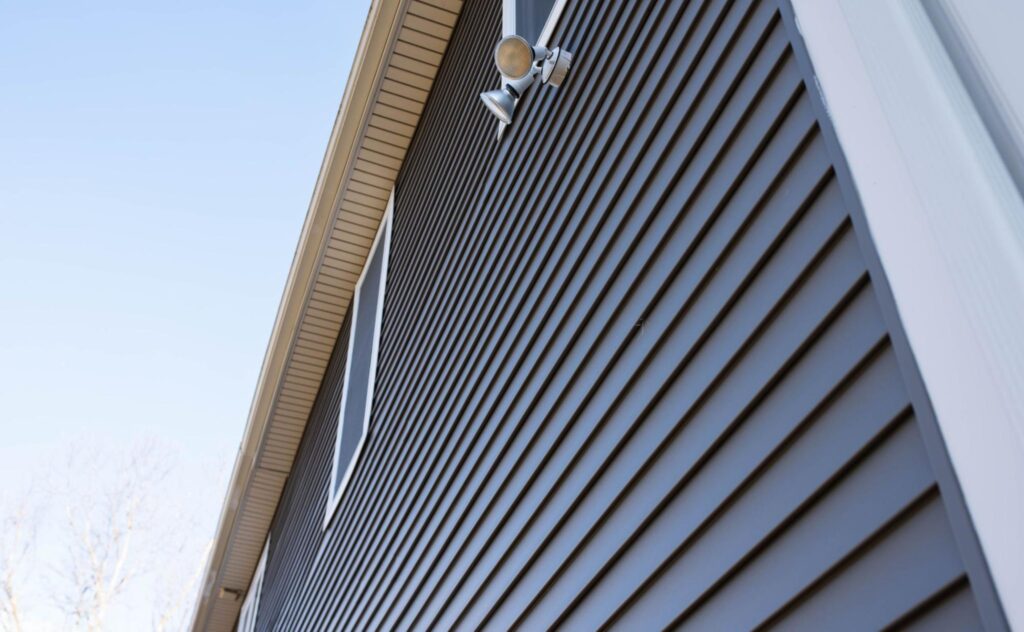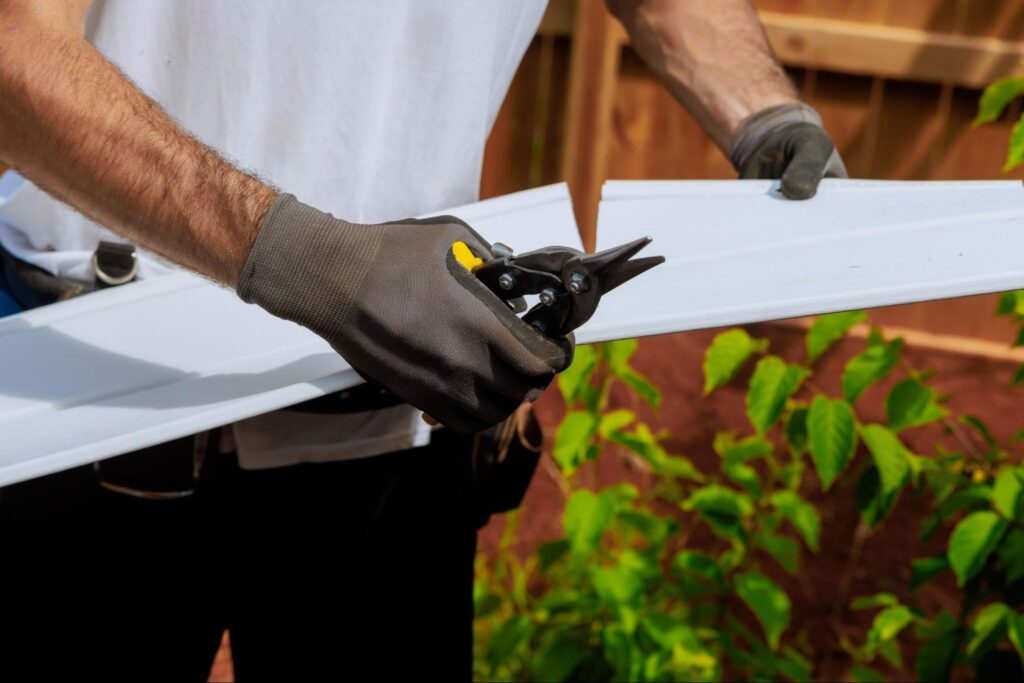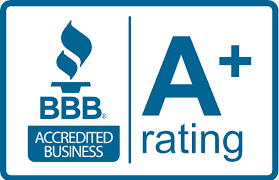
Homeowners often reach a tipping point where their siding no longer performs or appeals. Vinyl siding, while built for durability, doesn’t last forever. Over time, it fades, cracks, or warps, reducing protection and curb appeal. When energy costs rise or a property’s value needs to be boosted, many consider replacing vinyl siding as a long-term solution.
Why Homeowners Replace Vinyl Siding
Vinyl siding replacement restores a home’s function and appearance. Aging siding can compromise energy efficiency, allow moisture to enter, and decrease the property’s resale value. Homeowners start to notice higher utility bills or visible damage on the exterior. These issues add up quickly, making replacement a more practical move than continuous repairs.
Aging Vinyl Siding Wears Down Over Time
Older vinyl siding begins to show wear through fading, cracking, and brittleness. These signs often appear after decades of exposure to sun, rain, and seasonal changes. When panels loosen or warp, they no longer effectively seal out air or water. That can lead to drafts or trapped moisture inside the walls. Many homeowners ignore these signs until the damage affects insulation or framing. Replacing worn siding is the only way to restore performance fully.
Poor Insulation Can Drive Up Energy Costs
Outdated siding often lacks modern insulation or energy-efficient materials. As a result, heating and cooling systems work harder to maintain comfortable indoor temperatures, driving up energy bills, especially in homes with original siding from the 1990s or earlier. Upgraded vinyl siding with built-in insulation helps reduce thermal loss and more effectively stabilize interior temperatures. Homeowners who invest in insulated siding often notice immediate savings.
Curb Appeal Matters When Selling a Home
Curb appeal strongly influences a home’s value and marketability. Damaged or faded siding can deter potential buyers before they even enter. Replacing vinyl siding creates a fresh look that signals care and attention to detail. In many markets, homes with new siding sell faster and closer to the asking price. It’s a smart improvement for anyone planning to list their home soon.
Replacing Vinyl Siding Costs vs. Long-Term Value
While the upfront price of siding replacement is noticeable, the long-term benefits often outweigh it. Energy efficiency, lower maintenance costs, and home value gains all contribute to its return on investment. Understanding the total cost breakdown helps homeowners plan wisely and avoid surprises.
Upfront Siding Costs Depend on Size and Features
National averages indicate that vinyl siding replacement typically ranges from $6,000 to $15,000. Final costs vary based on the size, design complexity, and local labor rates of your home. Materials and added insulation can also raise or lower the price. These figures are general estimates, not fixed prices, and are subject to change over time. Vinyl remains more budget-friendly than alternatives such as wood or fiber cement. Consulting a licensed siding contractor is the best way to get an accurate quote.
Insulated Vinyl Siding Saves Money Over Time
Insulated siding offers one of the highest returns on investment among exterior upgrades. It reduces heating and cooling expenses while enhancing comfort inside the home. Homes in cold climates, especially, benefit from reduced drafts and improved thermal performance. Over the next 10 to 15 years, energy savings can cover a significant portion of the initial cost. Additionally, many insulated products qualify for tax credits or energy rebates. That makes them a smart upgrade, offering both immediate and long-term benefits.
Vinyl Requires Less Maintenance Than Other Materials
Vinyl siding requires minimal maintenance compared to painted wood or stucco. Maintaining appearance doesn’t require regular repainting, sealing, or treatment. High-quality siding resists color fading and surface damage. It reduces upkeep costs and time spent on repairs. Many homeowners find the reduced maintenance alone justifies the investment. Choosing quality materials can extend the lifespan of new siding to over 30 years.

Signs That It’s Time to Replace Vinyl Siding
Knowing when to replace siding helps prevent bigger problems from developing. When siding fails to protect the home adequately, damage to the framing, insulation, or drywall can result. Spotting early signs allows homeowners to take action before costs multiply.
Moisture Damage Shows Up as Mold or Warping
Moisture behind siding leads to warped panels, mildew, and peeling interior paint. These signs often appear after heavy rains or snow. Once water gets behind the siding, it can spread quickly, damaging insulation and wooden framing. Trapped moisture may also create air quality issues indoors. If you notice moldy smells or warped walls, it could be time to inspect your siding. Prompt replacement can prevent further damage.
Frequent Repairs Indicate Underlying Issues
If you constantly patch, seal, or replace siding panels, the root problem may be more significant. Aging vinyl becomes brittle and prone to cracking, particularly in extreme weather conditions. Frequent repairs cost money and reduce your home’s visual consistency. Eventually, repairs become less effective and more expensive than starting fresh. Upgrading to modern vinyl solves the issue altogether.
An Outdated Look Hurts Property Value
Siding that looks dated can drag down your home’s perceived value. Colors and textures from decades past often clash with modern tastes. New vinyl siding offers better customization, textures, and color stability. Updating the exterior brings the home up to current design trends, increasing neighborhood appeal and personal satisfaction.
Key Benefits of Replacing Vinyl Siding
Modern siding products outperform their older counterparts in almost every category. Today’s vinyl offers better energy efficiency, durability, and style options. Homeowners get a blend of practical performance and visual improvement for decades.
Modern Siding Designs Improve Curb Appeal
New vinyl siding includes high-end finishes, wood-look textures, and bold color choices. These updates mimic natural materials while offering better weather resistance. Matching trim and architectural accents can dramatically change a home’s appearance. Homeowners now have more ways to personalize their exterior without overspending. It helps the property stand out in any neighborhood. Improved aesthetics also translates into increased property value.
New Siding Raises Appraisal and Resale Value
Homes with new siding often receive higher appraisals and stronger offers. According to national housing data, vinyl siding replacement recovers about 70–80% of its cost at resale, making it among the most financially rewarding home improvements. Buyers appreciate low-maintenance exteriors and updated curb appeal, which makes new siding a competitive advantage in any housing market.

Weather-Resistant Siding Protects the Structure
Modern vinyl can withstand high winds, UV rays, and impacts from debris. Insulated siding also prevents cold spots and heat intrusion. With tighter seams and better locks, moisture intrusion is less likely to occur. It protects insulation, drywall, and framing from long-term damage. Siding that resists the elements keeps maintenance low and comfort high throughout the year.
Better Insulation Means Quieter Living Spaces
Some new siding products reduce exterior noise, especially in busy neighborhoods. Added insulation dampens sounds from traffic, construction, and loud weather, resulting in quieter rooms and more peaceful living environments. Paired with upgraded windows, the effect is even more noticeable. Homeowners who replace their siding often comment on improved indoor tranquility.
Choosing the Right Vinyl Siding and Contractor
Not all siding materials or installers deliver the same results. Choosing a skilled contractor and the right product makes all the difference. With so many styles and features available, it helps to start with trusted experts who understand your home’s needs.
Licensed Contractors Guarantee Better Results
Professional siding contractors bring experience, accountability, and insurance protection. They follow building codes, manufacturer guidelines, and safety protocols. A licensed team also handles permits and inspections when needed. Always ask for references, portfolios, and written estimates. A well-reviewed local company is more likely to stand behind its work. Don’t settle for the cheapest bid without vetting credentials.
Siding Styles Include Insulated and Textured Options
Vinyl siding has various profiles, including lap, shake, and board-and-batten. Insulated siding adds an extra layer of foam backing for energy performance. Textured siding mimics wood or cedar shingles but resists rot and insects. Your climate, home style, and budget will influence the best option. Many homeowners mix styles for a more custom look. Work with a contractor when choosing materials to complement your home’s architecture.
Warranty Coverage Supports Long-Term Peace of Mind
Most high-quality vinyl siding comes with warranties ranging from 20 years to lifetime. Coverage varies depending on factors such as fading, impact resistance, or labor guarantees. Read warranty terms carefully to understand what’s included and excluded. Installers may also offer craft warranties for added peace of mind. A strong warranty protects your investment for years to come. Ensure that reputable sources support both materials and labor.
Replacing Vinyl Siding is a Smart Long-Term Move
Old, damaged siding can lead to higher utility bills, a lower home value, and ongoing repair costs. Replacing vinyl siding restores performance, boosts insulation, and sharpens curb appeal. With modern siding materials and expert installation, the benefits are evident from the start. Property owners who wait often face more extensive repairs and increased energy loss. Start planning your siding replacement with professionals who know what quality work looks like and deliver results you can count on.
From siding advice to roofing know-how, the Faircloth Roofing, Inc. blog has you covered—discover solutions that work for your home.






